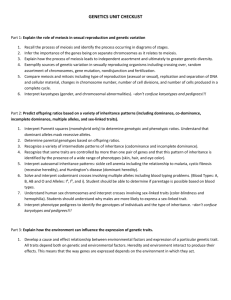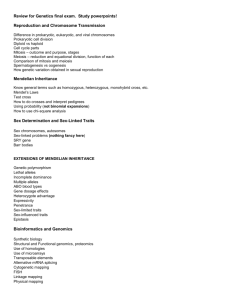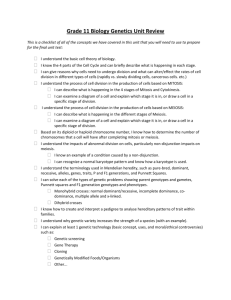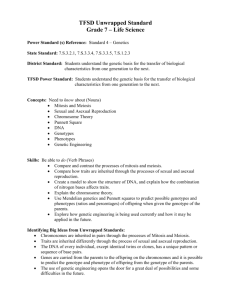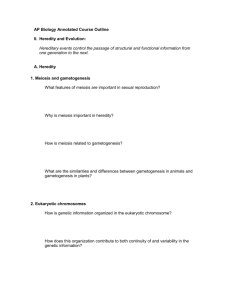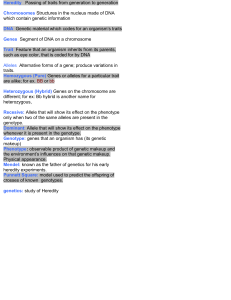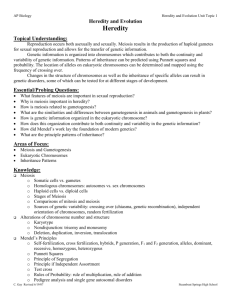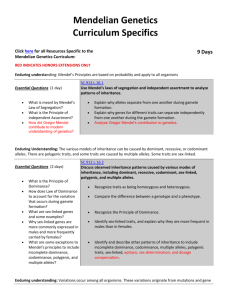Objectives - OpenWetWare
advertisement
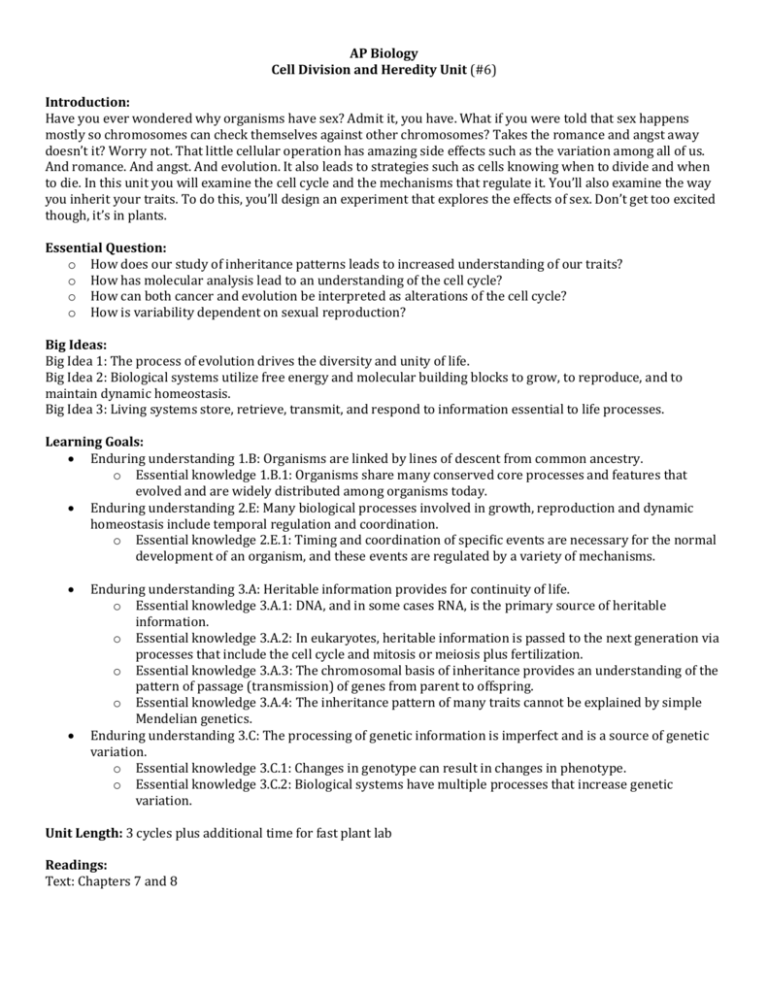
AP Biology Cell Division and Heredity Unit (#6) Introduction: Have you ever wondered why organisms have sex? Admit it, you have. What if you were told that sex happens mostly so chromosomes can check themselves against other chromosomes? Takes the romance and angst away doesn’t it? Worry not. That little cellular operation has amazing side effects such as the variation among all of us. And romance. And angst. And evolution. It also leads to strategies such as cells knowing when to divide and when to die. In this unit you will examine the cell cycle and the mechanisms that regulate it. You’ll also examine the way you inherit your traits. To do this, you’ll design an experiment that explores the effects of sex. Don’t get too excited though, it’s in plants. Essential Question: o How does our study of inheritance patterns leads to increased understanding of our traits? o How has molecular analysis lead to an understanding of the cell cycle? o How can both cancer and evolution be interpreted as alterations of the cell cycle? o How is variability dependent on sexual reproduction? Big Ideas: Big Idea 1: The process of evolution drives the diversity and unity of life. Big Idea 2: Biological systems utilize free energy and molecular building blocks to grow, to reproduce, and to maintain dynamic homeostasis. Big Idea 3: Living systems store, retrieve, transmit, and respond to information essential to life processes. Learning Goals: Enduring understanding 1.B: Organisms are linked by lines of descent from common ancestry. o Essential knowledge 1.B.1: Organisms share many conserved core processes and features that evolved and are widely distributed among organisms today. Enduring understanding 2.E: Many biological processes involved in growth, reproduction and dynamic homeostasis include temporal regulation and coordination. o Essential knowledge 2.E.1: Timing and coordination of specific events are necessary for the normal development of an organism, and these events are regulated by a variety of mechanisms. Enduring understanding 3.A: Heritable information provides for continuity of life. o Essential knowledge 3.A.1: DNA, and in some cases RNA, is the primary source of heritable information. o Essential knowledge 3.A.2: In eukaryotes, heritable information is passed to the next generation via processes that include the cell cycle and mitosis or meiosis plus fertilization. o Essential knowledge 3.A.3: The chromosomal basis of inheritance provides an understanding of the pattern of passage (transmission) of genes from parent to offspring. o Essential knowledge 3.A.4: The inheritance pattern of many traits cannot be explained by simple Mendelian genetics. Enduring understanding 3.C: The processing of genetic information is imperfect and is a source of genetic variation. o Essential knowledge 3.C.1: Changes in genotype can result in changes in phenotype. o Essential knowledge 3.C.2: Biological systems have multiple processes that increase genetic variation. Unit Length: 3 cycles plus additional time for fast plant lab Readings: Text: Chapters 7 and 8 Objectives: By the conclusion of this unit you will be able to… 1. 2. 3. 4. 5. 6. 7. 8. 9. 10. 11. 12. 13. 14. 15. 16. 17. 18. 19. 20. 21. 22. 23. 24. 25. 26. 27. Compare and contrast sexual and asexual reproduction. Explain benefits and drawbacks to each. List and describe three sexual life cycles. Explain the roles of meiosis and homologous pairs of chromosomes in the production of gametes. Compare and contrast eukaryote and prokaryote cell division. Describe the process of prokaryote chromosome replication. Describe each stage of the eukaryote cell cycle. Describe each stage of mitosis and cytokinesis. Explain how the cell cycle is regulated internally at checkpoints and by Cdks). Explain the role of oncogenes and tumor suppressors in regulating the cell cycle. Compare and contrast the products of meiosis and mitosis. Compare and contrast the stages of meiosis and mitosis. Explain how crossing over and independent assortment generate diversity. Describe abnormal chromosome structures and numbers caused by meiotic errors. Explain apoptosis and why it is important for development. Describe Mendel’s experiments and how they led to our understanding of heredity. Explain Mendel’s Principle of Segregation and Principle of Independent Assortment. Use probability to solve mono-, di-, and tri-, hybrid crosses. Use a Chi-squared test to analyze mono- and di- hybrid crosses. Interpret human pedigrees. Explain the roles of alleles and genes in determining genotypes and phenotypes. Explain the role of mutations in producing alleles and genetic variation. Explain the following inheritance patterns and provide examples of each: Dominance/recessive, codominance, incomplete dominance, multiple alleles, epistasis. Explain the effect that the environment can have on phenotypic expression. Explain the terms penetrance and expressivity by relating each to breast cancer. Describe the structure of a chromosome and explain how genes are arranged on them. Apply the concept of recombination frequency to the creation of genetic linkage maps. Explain how some traits can be sex-linked. Explain how some traits can be cytoplasmically inherited. Explain how prokaryotes exchange genetic material. Activities and Assessments: Sordaria genetic recombination frequency and chi squared lab AP lab: Fast Plants Heredity plus formal lab report Pom-Pom genetics lab activity Mendelian and non-Mendelian Heredity problem sets Student notes on readings Class lectures and discussions Practice AP FRQ Reading quizzes Unit exam including FRQs
